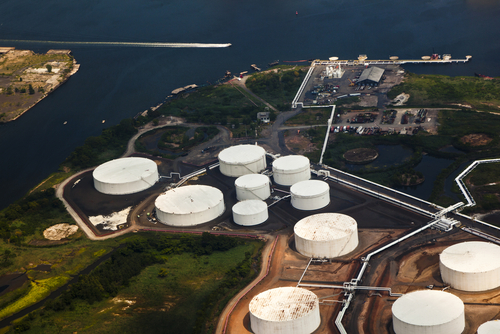 |
If you are required to comply with the Spill Prevention, Control and Countermeasures (SPCC) rule defined under the federal Oil Pollution Prevention regulations, you may also have to address the regulation’s second set of requirements – the FRP rule. Or you may not.
The U.S. Environmental Protection Agency’s (EPA’s) FRP rule applies to certain non-transportation related facilities that use or store oil “of any kind or in any form…” FRPs are required to address a facility’s response to a worst case discharge of oil and to a substantial threat of such a discharge to the maximum extent practicable. That much is easy to understand, but how does EPA define which facilities are covered under the FRP rule?
The number one determining factor is that of a “substantial harm facility,” which, in this rule is defined as “a facility that, because of its location, could reasonably be expected to cause substantial harm to the environment by discharging oil into or on navigable waters or adjoining shorelines.” While this definition may also seem simple, it is important to understand that the definition of “navigable waters” covers pretty much every surface water scenario, and then some.
Simplify SPCC compliance with the NEW TRAC360 platform. In just a few minutes, see how easy it is to create compliant plans and checklists, train your team, and find answers to all your SPCC questions. Learn More.
The EPA provides this definition:
“ Navigable waters are not only waters on which a craft may be launched. They also include the following types of waters their tributaries and adjacent wetlands:
1.) Waters with a past, present or possible future use in interstate or foreign commerce including waters subject to the ebb and flow of the tide;
2.) Interstate waters, including interstate wetlands;
3.) All other waters whose use, degradation, or destruction could affect interstate or foreign commerce; these may include intrastate lakes, rivers, streams (including intermittent streams), mudflats, sandflats, playa lakes, or natural ponds;
4.) Impoundments of waters that are defined as waters of the United States; and
5.) Territorial sea.”
According to EPA, there are two primary ways a facility can be classified a substantial harm facility:
1.) The facility meets the criteria for substantial harm defined in 40 CFR 12.20 (f)(1), or
2.) An EPA regional administrator determines a facility poses substantial harm to the environment.
The Ultimate SPCC Compliance Tool
TRAC360 for SPCC is a powerful application that simplifies compliance with EPA’s Spill Prevention, Control, and Countermeasure rule. Whether you need help creating your facility-specific SPCC plan, writing inspection checklists for your tanks, or training your oil-handling workforce, TRAC360 is there to help. Learn More.
Substantial harm criteria follow a logical progression to define coverage under the FRP rule by starting with the highest potential for harm. The first level is for those who perform “over water transfers” of oil to or from vessels and with a oil storage capacity equal to or greater than 42,000 (gal). If this describes your operations, you must prepare and submit an FRP to the RA. If your facility does not fit this description the next question is, How much oil storage capacity do you have? If it is less than 1,000,000 gal, you do not have to submit an FRP.
However, facilities with oil storage capacity at or above 1 million gal will then proceed to answer additional questions and an affirmative answer to any of these “substantial harm factors” will trigger the need for an FRP. These questions address:
- The lack of adequate secondary containment for the largest aboveground storage tank (including freeboard) within any aboveground storage tank area;
- The location of the facility and potential for a discharge that would injure fish, wildlife and sensitive environments;
- The location of a facility and potential for a discharge to shut down a public drinking water intake; and
- The facility’s reportable spills greater than or equal to 10,000 gal within the past 5 years.
If your facility is able to answer “no” to all of these questions, you may not be required to prepare and submit an FRP. However, facilities that do not have to comply with the FRP rule must complete a Certification of Substantial Harm and maintain it with your SPCC Plan at your facility.
